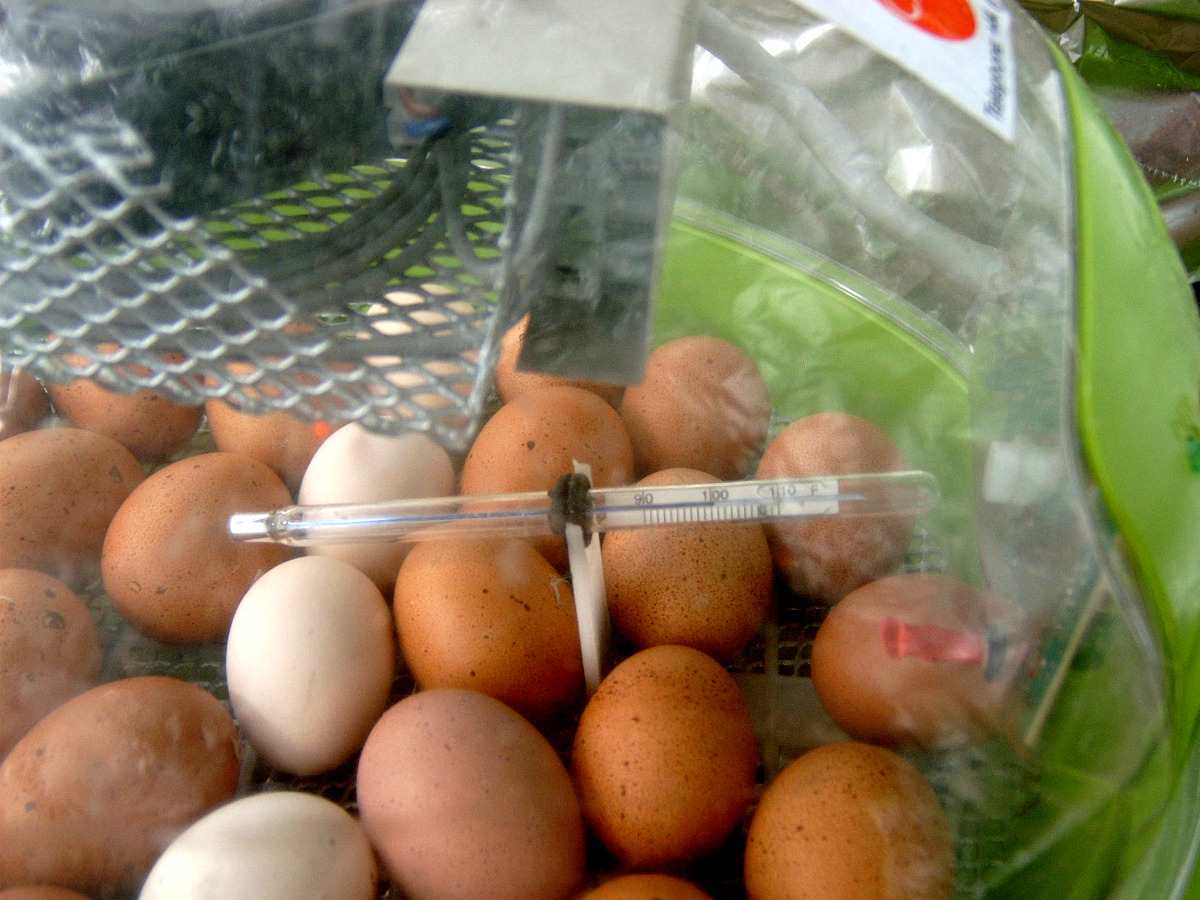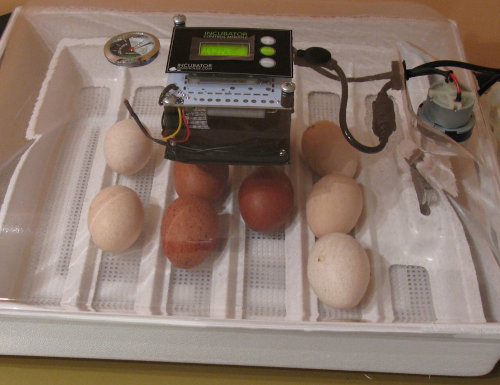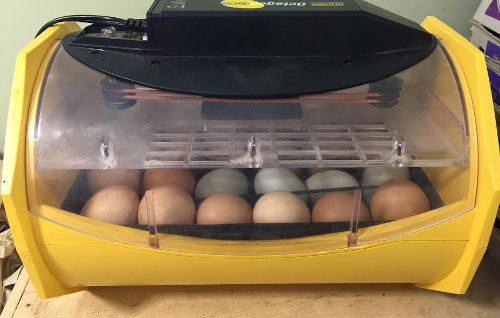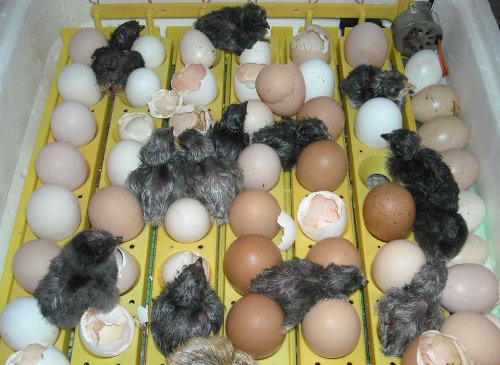Why egg turning during incubation is so important and what the science says is best .

Incubators are designed to do the same job as a mother hen and turn eggs either continuously, or on a programmed cycle.
It is important to turn the eggs at least three and preferably five times daily as this most closely mimics the way hens treat their eggs in the nest.
Table of Contents
- Why do you have to turn eggs?
- How far do eggs need to be turned?
- What happens if eggs are not turned?
- Should you turn stored eggs before setting them in the incubator?
- How often do eggs have to be turned during incubation?
- Is automatic or manual egg turning best?
- How do egg turners work?
- Will eggs hatch if not turned?
- How to turn eggs in incubator:
Turning the eggs is important for gaseous exchange (breathing) and to stop the membranes sticking together inside the egg.
Why do you have to turn eggs?
Egg turning stimulates the development of parts of the egg and stops the membranes sticking together. The yolks contains fats and so will float in the white, and over time and the yolk will stick to the top of the egg if not moved around regularly.
- Stimulates growth.
- Stops membranes sticking.
- Evens out the temperature inside the eggs.
- Helps with gaseous exchange (breathing).
You should always mark eggs you have selected for incubation with a pencil or water based marker so as you know which side up they are. Some people use a cross on one side and a circle on the other but there are many ways. It also helps to keep a pen and paper handy and note the day and time you turn your eggs so as you know where you are in the cycle.
Turning is very important for the rate of development of the area vasculosa or the membrane which grows around the yolk and is rich in blood vessels and is important for sub-embryonic fluid formation, as well as for yolk uptake later in incubation.
How far do eggs need to be turned?
Eggs incubated on their sides have to be turned by at least 180 degrees and must be turned in opposite directions each time they are rotated.
Eggs incubated with their large ends up need to be be turned at least 45 degrees either side of the vertical or 90 degrees in total.
A study in 1953 found that eggs that were not turned far enough had an up to 10% lower hatch rate.
What happens if eggs are not turned?
Not turning the eggs means the membranes inside the shell will stick together and the embryo might not be able to move itself into it's final hatching position and may never emerge from the egg.
Below: This eggs was incubated for 48 hours without being turned.
Turning is very important for the rate of development of the area vasculosa or the membrane which grows around the yolk and is rich in blood vessels. The area vasculosa is important for sub-embryonic fluid formation, as well as for yolk uptake later in incubation.
Below: Incubator showing egg rolling cradle.

If you have forgotten to turn eggs in incubator then just start again as soon as you remember. Turn them a little more often for the next day or so and make sure they are the opposite side up overnight to give them the best chance.
If you are ever unsure about how to treat eggs in an incubator, think what a mother hen would do as she sits on her nest.
Should you turn stored eggs before setting them in the incubator?
Egg that are to be stored for more than 24 hours before incubation need to be laid on their side and turned through 180° at least once a day.
In a study of 7500 fertile hatching eggs in 2021 it was found that hatch-ability in eggs stored for 4 days increased by 2.02% by turning the eggs just once a day through 180°.
Below: My guide on storing eggs before setting.
This is not as important, if you think about how a hen would do it, she would only start turning eggs in a nest after she began to sit on them, which could mean they have spent 10 to 12 days lying on their sides with no real problems.
How often do eggs have to be turned during incubation?
From the Hummingbird to the Ostrich, all birds eggs have to be turned during incubation.
Eggs must be turned at least 3-5 times daily during the incubation period or moved by the automatic egg roller continuously. The reason for the odd number of egg rotations every day is to change the side of the egg that spend the long night the same way up.
In a study into the effects of egg turning on final hatch rate in 2020, it as found that 24 times a day was best, turning 12 times a day resulted in a decrease of hatch rate of 6.61%, 6 times a day reduced the hatch rate by 15.51% and turning 3 times a day reduced the hatch rate by 19.7% from the control.
If you were to only turn eggs two or four times a day then the same side of the egg would face the top for the long overnight session which may impact your hatch rate.
Do not turn eggs during the last three days before hatching. The embryos are moving into hatching position and need no turning.
Is automatic or manual egg turning best?
Automatic egg turners are the best as you don't need to remember to turn the eggs and they work overnight.
Automatic egg turners are the best by far as most move the eggs continuously backwards and forwards or on a two hour cycle. This enables you to keep the incubator closed during incubation to maintain proper temperature and humidity.
Below: An incubator with a cradle type egg turner and a small motor to push the eggs backwards and forwards.

Just remember to turn the egg rollers off otherwise you could end up with hatched chicks being rolled about your incubator, and yes, I have done this on more than one occasion in the past and it reduced my hatch rate by around a third.
The second best turner is the one that manually turns all the eggs at once but has a handle outside the machine.
How do egg turners work?
Egg turners work in four ways:
- The eggs sit on rollers which turn slowly.
- The eggs sit in a cradle that rocks them backwards and forwards.
- The eggs sit in a grid that moves back and forth over a solid base.
- The whole incubator rocks from side to side.
The eggs are turned continuously or in cycles triggered by the software that controls the machine. Some of the work very slowly and all the time and other work in bursts, turning all the eggs at once.
Below: Some incubators tilt the whole machine from side to side to turn eggs.

Neither method is better, they both accomplish the task.
Will eggs hatch if not turned?
It is unlikely that eggs will hatch without incident if they are not turned every day.
I have had incubators where the egg roller has failed on day 10 during the cycle and nothing as hatched at all even though most of the eggs continued to develop.
Not turning the eggs for 7 days resulted in 100% loss.
How to turn eggs in incubator:
To turn eggs by hand, first make sure you have washed your hands, then open the incubator and carefully roll the eggs over by 180 degrees. Work quickly and with care not to drop any of the eggs.
Below: Remember to remove egg cradles for the hatch as the hatch will be better if the eggs are on their sides.

If you have an automatic turning incubator, you should still mark the eggs so you know it is working properly and check a few times a week. If it has a separate turning mechanism, remember to turn it on and set the days correctly if you have a programmable machine.
